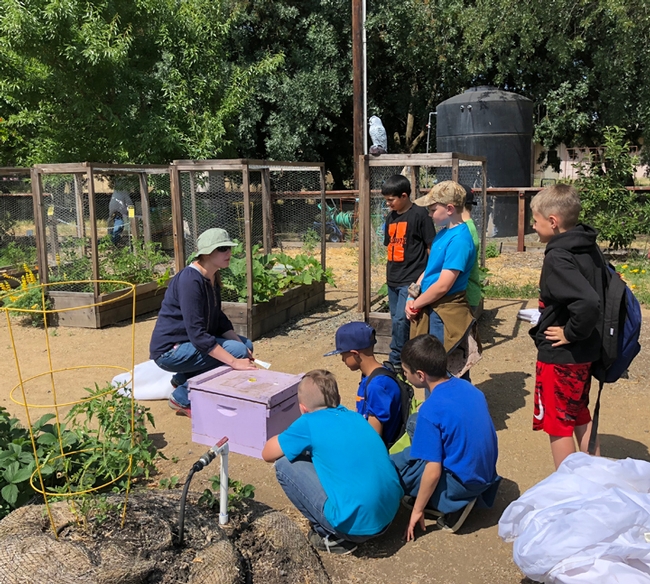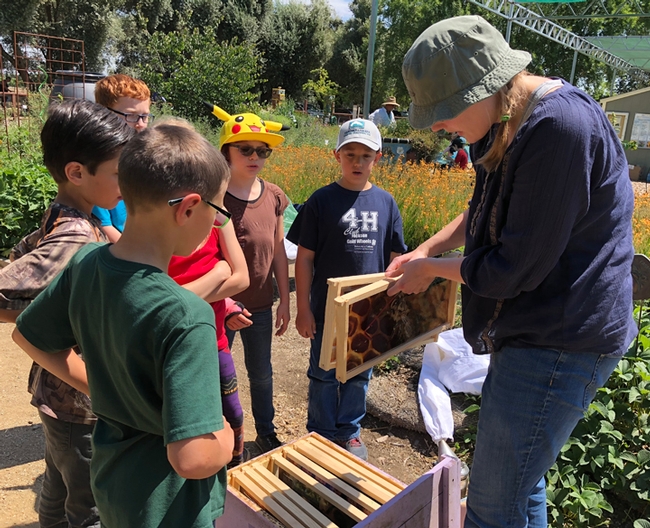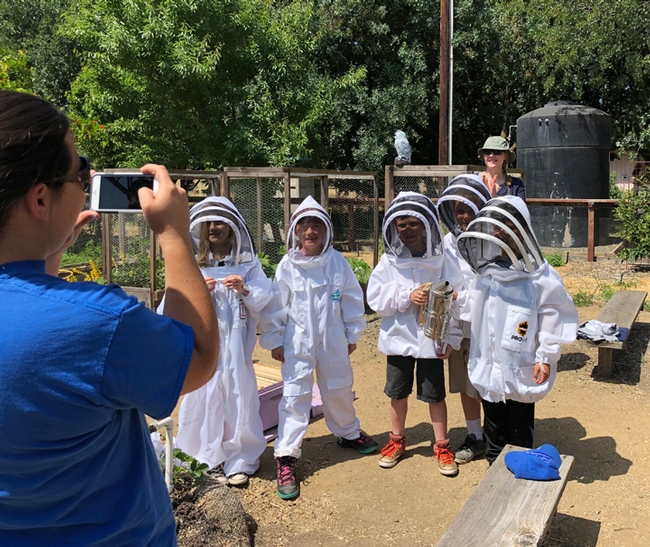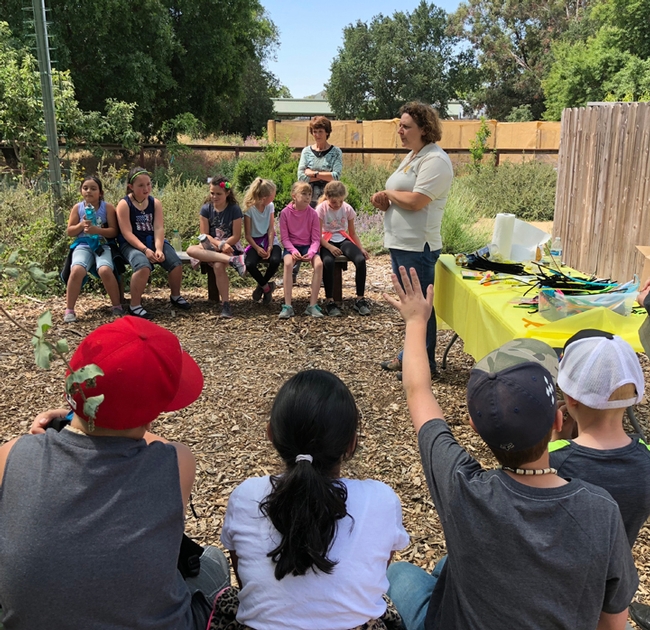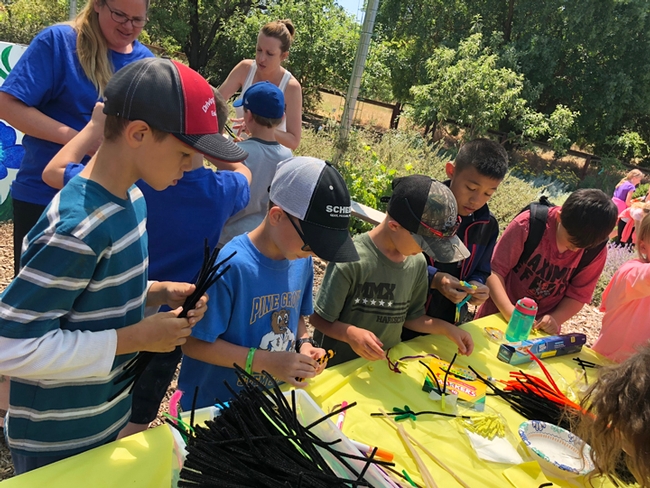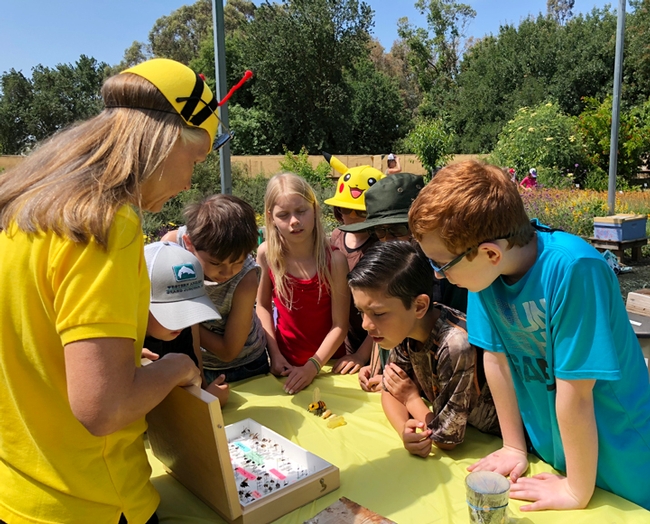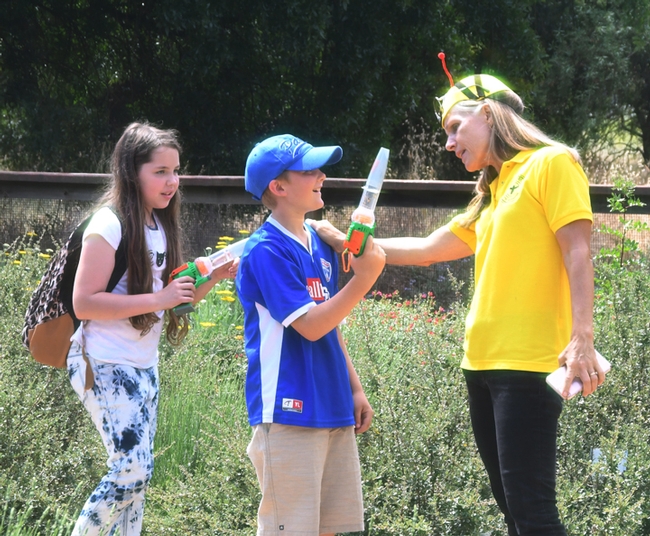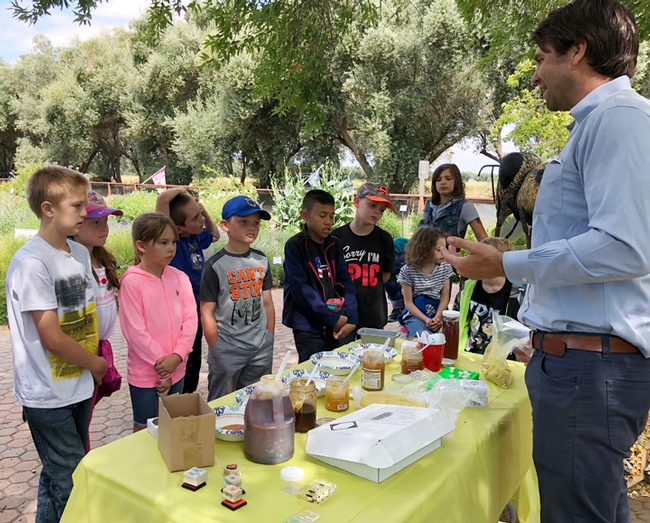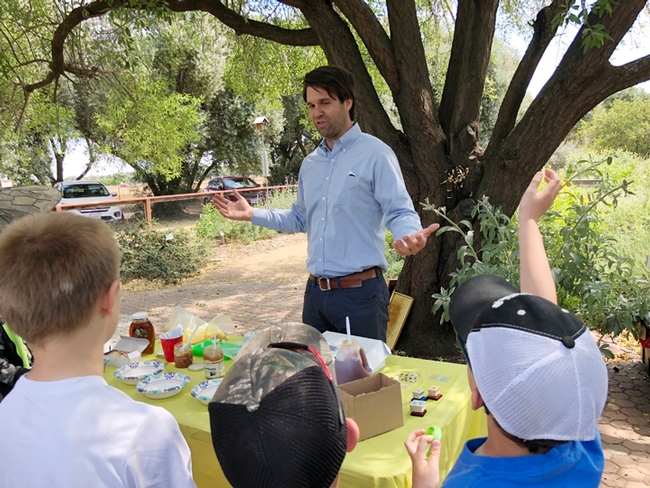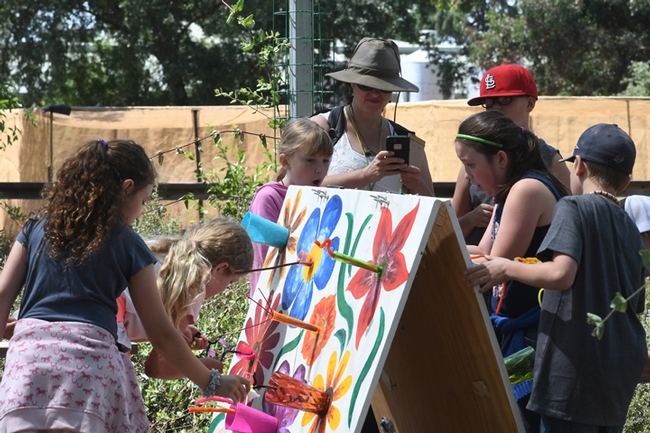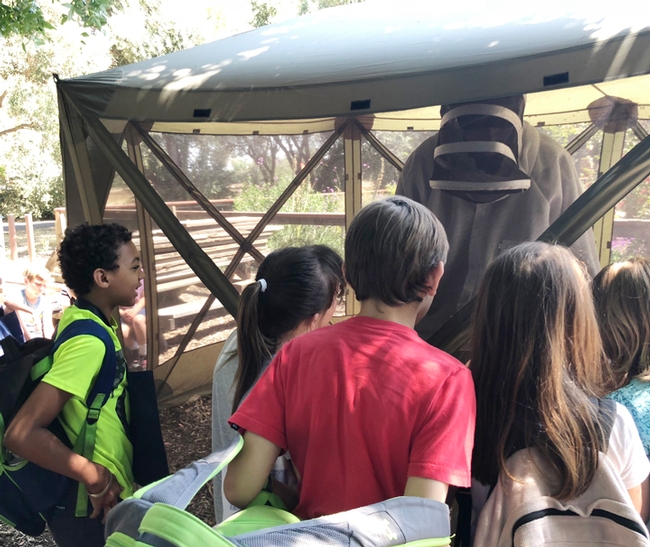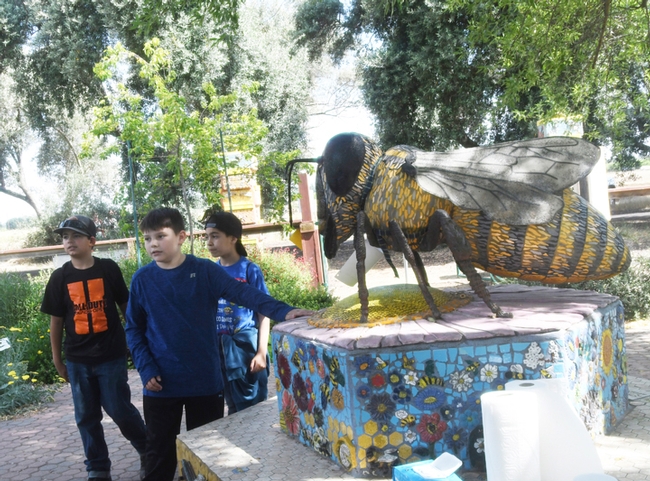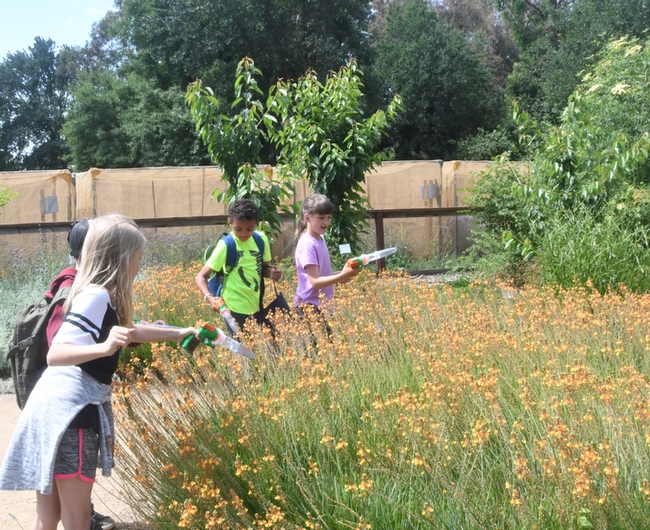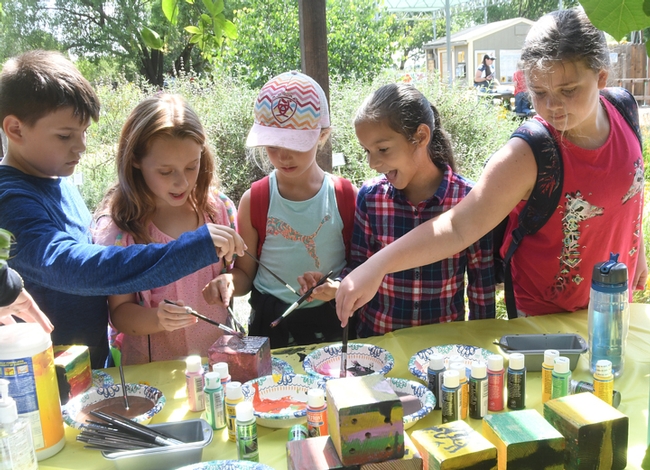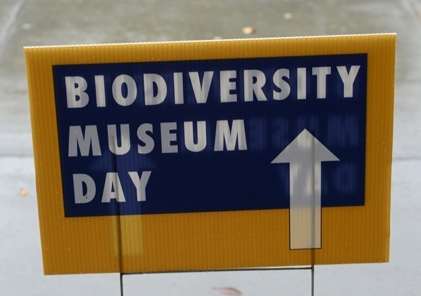- Author: Kathy Keatley Garvey
Crowdfund UC Davis began today (Feb. 1) for the UC Davis Biodiversity Museum Day (Month), the Häagen-Dazs Honey Bee Haven and the California Master Beekeeper Program and will continue through the month of February.
The project is described as "where alumni, students, parents and friends can make donations to support innovative projects that propel student engagement, new research discoveries, and efforts to expand UC Davis impact on California and the world."
Capsule information from the sites:
UC Davis Biodiversity Museum Day (Month)
Project coordinators are Tabatha Yang, education and outreach coordinator for the Bohart Museum of Entomology; Kyria Boundy-Mills, curator of the Phaff Yeast Culture Collectionand Rachel Alsheikh, a junior specialist and curatorial assistant at the Museum of Wildlife and Fish Biology
In its 10th year, UC Davis Biodiversity Museum Day remains a free, annual, educational event for the community. Each year thousands of visitors stroll the campus on the Saturday of Presidents' Day weekend, visiting UC Davis' biological collections and meeting and talking with scientists. Participating collections include, but are not limited to
- Anthropology Museum
- Arboretum and Public Garden
- Bohart Museum of Entomology
- Botanical Conservatory
- California Raptor Center
- Center for Plant Diversity
- Häagen-Dazs Honey Bee Haven
- Nematode Collection
- Marine Invertebrate Collection
- Museum of Wildlife and Fish Biology
- Paleontology Collection
- Phaff Yeast Culture Collection
- Viticulture and Enology Collection
This year, throughout the month of February, we will be offering a virtual “BioDivDay” with lectures, talks, and demos from experts, but we want our student interns to have the opportunity to take the lead on producing 15 cross-disciplinary videos and educational activities. These videos and activities will broaden our audience and will aim to reach underserved populations. Creating these resources and helping to plan for a future in-person event will solidify our students' science communication skills--skills that are crucial in this day and age. Your support will enable our diverse group of students to have a meaningful and lasting impact as science communicators for Biodiversity Museum Day.
Donations will not only help us sustain the free, in-person event, but it will also enable our student interns to take science outreach to a whole new level. Using their science communication skills, our interns will create 15 themed videos and associated educational activities related to Biodiversity Museum Day. The goal of these educational resources is to reach new audiences and to connect people from all walks of life to science and the biodiversity surrounding them.
To donate, click here:
https://crowdfund.ucdavis.edu/project/24310
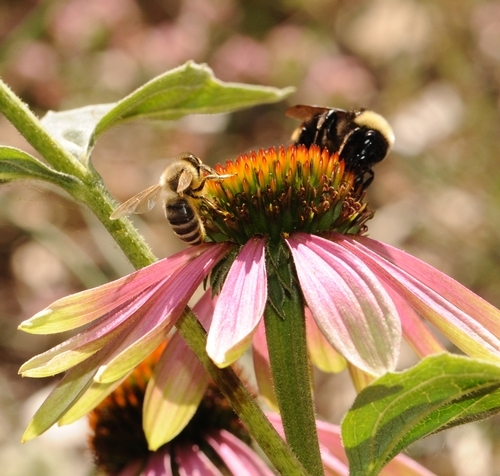
Häagen-Dazs Honey Bee Haven
Extension apiculturist Elina Lastro Niño, serves as the director of the Haven. Chris Casey manages the half-acre garden, located on Bee Biology Road next to the Harry H. Laidlaw Jr. Honey Bee Research Facility. It is part of the UC Davis Department of Entomology and Nematology.
Like to eat? Thank a bee! These hard-working animals pollinate nearly 90 percent of all flowering plants, including the fruits, nuts, and vegetables that make our diets tasty and nutritious. Bees also pollinate the plants that create food and habitat for birds and most other wildlife. It's clear: healthy, abundant bee populations are vital.
But bees are in trouble and they need our help. California has about 1600 native bee species; along with the non-native honey bee all are pollinators. Bees need flowers, and the Haven is a source of information and inspiration about what and how to plant. From a single flowerpot to acres, we can all do something to help.
Our goal is $5000 to purchase plants, irrigation supplies, and tools for the Haven to continue our vital mission of inspiration and education about bees and the plants that support them.
To donate, click here:
https://crowdfund.ucdavis.edu/project/24323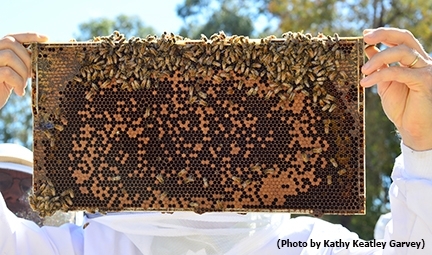
California Master Beekeeper Program
Extension apiculturist Elina Lastro Niño of the UC Davis Department of Entomology and Nematology founded and directs the California Master Beekeeper Program. Wendy Mather serves as the program manager.
The California Master Beekeeper Program at UC Davis is raising funds for an online, accessible, 'Beekeeper's Apprentice' course that is educational, engaging and entertaining for all ages.
Learners will explore the intersection of honey bees, beekeepers, farmers, food diversity and security and become beginner beekeepers and honey bee ambassadors, equipped to explain the basics of beekeeping and honey bee biology, and to convey the devastating effects of pesticides, pests, pathogens, habitat destruction, and climate change on our beloved bees. The online course is a series of science-based modules in which you and your avatar, the Beekeepers' Apprentice explore and earn badges for the knowledge and skill you acquire about honey bee biology, beekeeping basics, equipment and PPE, public safety, and the future of farming and food security. You'll get a ‘bees-eye' view of what it's like to be a honey bee through video and audio from inside the hive, and examine the benefits and challenges faced by today's beekeepers and honey bees. This course will be accessible to learners across all demographics so kids and grownups can enjoy "pollinating" and sharing the science behind the relationship between honey bees and our fresh healthy food.
Your donation is a legacy to help ensure the health and longevity of our honey bees. Money raised for our "Beekeepers' Apprentice" course is an investment in science-based knowledge relative to our food security and the health of our environment now and for future generations - let's educate as many people as we can about the plight of our precious honey bees. Together we can bee the change!
Please support the California Master Beekeeper Program, where our current priority is an online, fully accessible, fun, science-based course to raise awareness of our dependence on honey bees for the many delicious and healthy foods we sometimes take for granted! Thank you for your support and consideration in bee-coming a honey bee ambassador and environmental steward!
To donate, click here:
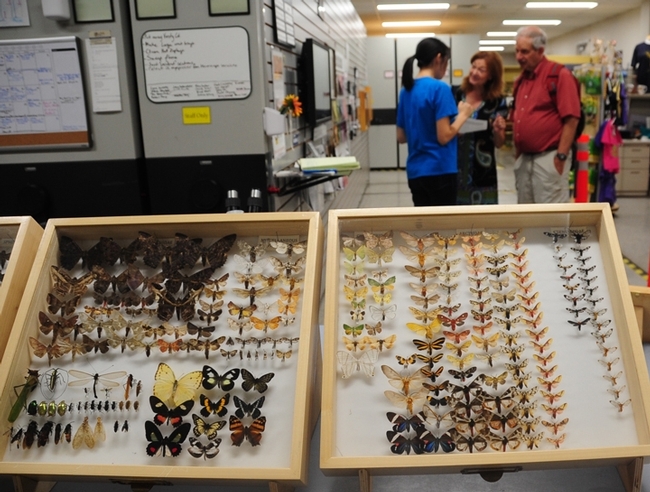
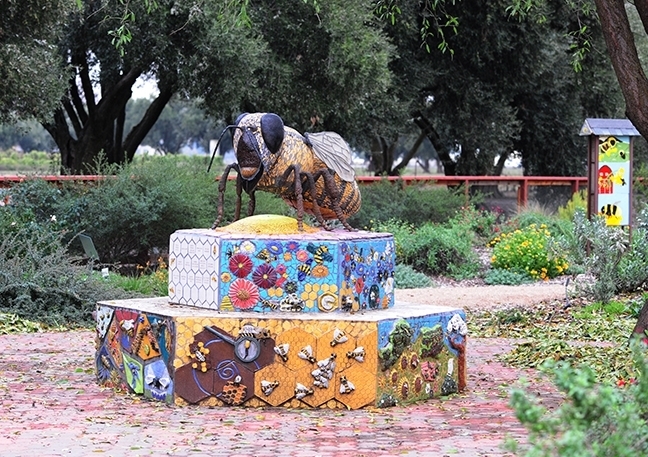
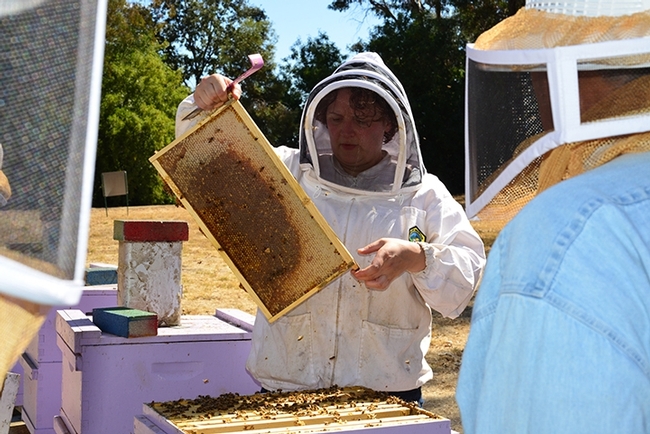
- Author: Kathy Keatley Garvey
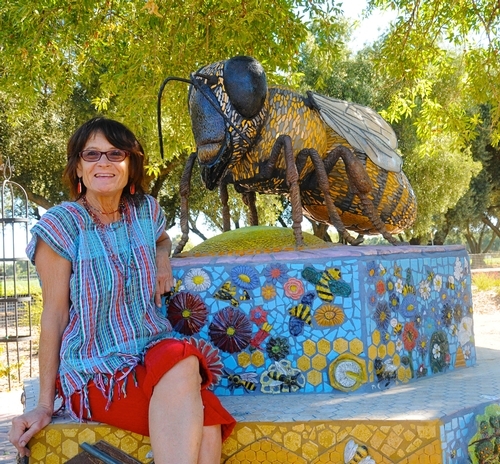
Headlines on colony collapse disorder dominated the news media, as scientists declared "honey bees are in trouble."
Under the direction of interim department chair Lynn Kimsey, UC Davis Department of Entomology and Nematology, a crew installed the Häagen-Dazs Honey Bee Haven (named for it major donor) on Bee Biology Road, next to the Harry H. Laidlaw Jr. Honey Bee Research Facility.
Fast forward to the fall of 2019.
A 10th anniversary celebration will take place from 10 a.m. to 2 p.m., Saturday, Sept. 28 in the bee garden. It will include sales of plants and native bee condos, honey tasting (honey from Sola Bee Honey, Woodland), catch-and-release bee observation and identification, and beekeeping and research displays. Several mini lectures are planned.
Visitors will see analemmatic sundial--the only one of its kind in the Sacramento area--and they can discuss the sundial with dial master and beekeeper Rick Williams, M.D. to learn how the dial was created and the links between human and bee perception of the sun. Visitors also will learn about "our research on bee use of ornamental landscape plants," said manager Chris Casey. In addition, visitors can "donate a book on insects, gardening, or nature for our Little Free Library," she announced.
The schedule:
- 10:30 a.m.: Donor and volunteer recognition
- 11 a.m.: Hive opening by beekeeper from the California Master Beekeepers' Association
- 11:30: Mini lecture, "Getting Started with Beekeeping"
- 12: Mini lecture, "Plants for Bees"
- 12:30: Mini lecture, "Using Solitary Bee Houses
- 1 p.m.: Hive opening by beekeeper from the California Master Beekeepers' Association
History of the Bee Garden
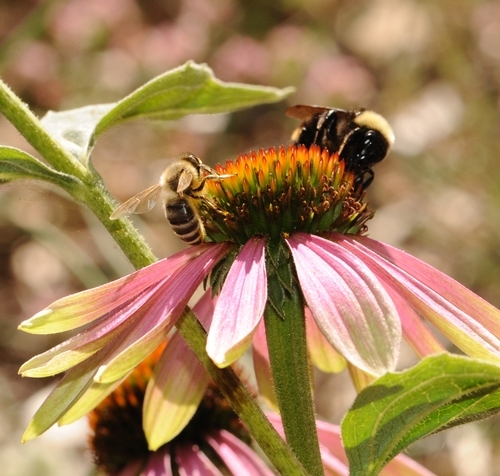
Häagen-Dazs wanted the funds to benefit sustainable pollination research, target colony collapse disorder, and support a postdoctoral researcher. It was decided to install an educational garden, conduct a design contest, and award a research postdoctoral fellowship to Michelle Flenniken (now with the Montana State University).
A Sausalito team--landscape architects Donald Sibbett and Ann F. Baker, interpretative planner Jessica Brainard and exhibit designer Chika Kurotaki--won the design competition. The garden was installed in the fall of 2009 under the direction of interim department chair Lynn Kimsey, director of the Bohart Museum of Entomology and professor of entomology.
An eight-member panel selected the winner of the design competition: Professor Kimsey; founding garden manager Missy Borel (now Missy Borel Gable), then of the California Center for Urban Horticulture; David Fujino, executive director, California Center for Urban Horticulture at UC Davis; Aaron Majors, construction department manager, Cagwin & Dorward Landscape Contractors, based in Novato; Diane McIntyre, senior public relations manager, Häagen-Dazs ice cream; Heath Schenker, professor of environmental design, UC Davis; Jacob Voit, sustainability manager and construction project manager, Cagwin and Dorward Landscape Contractors; and Kathy Keatley Garvey, communications specialist, UC Davis Department of Entomology.
Others who had a key role in the founding and "look" of the garden included the UC Davis Art/Science Fusion Program, founded and directed by the duo of entomologist/artist Diane Ullman, professor and former chair of the UC Davis Department of Entomology, and self-described "rock artist" Donna Billick. The art in the garden is the work of their students, ranging from those in Entomology 1 class to community residents. Eagle Scout Derek Tully planned, organized and built a state-of-the-art fence around the garden.
"The Honey Bee Haven will be a pollinator paradise," Kimsey related in December 2008. "It will provide a much needed, year-round food source for our bees at the Harry H. Laidlaw Jr. Honey Bee Research Facility. We anticipate it also will be a gathering place to inform and educate the public about bees. We are grateful to Haagen-Dazs for its continued efforts to ensure bee health."
The garden, Kimsey said, would include a seasonal variety of blooming plants that will provide a year-round food source for honey bees. It would be a living laboratory supporting research into the nutritional needs and natural feeding behaviors of honey bees and other insect pollinators.
Visitors to the garden, she said, would able to glean ideas on how to establish their own bee-friendly gardens and help to improve the nutrition of bees in their own backyards.
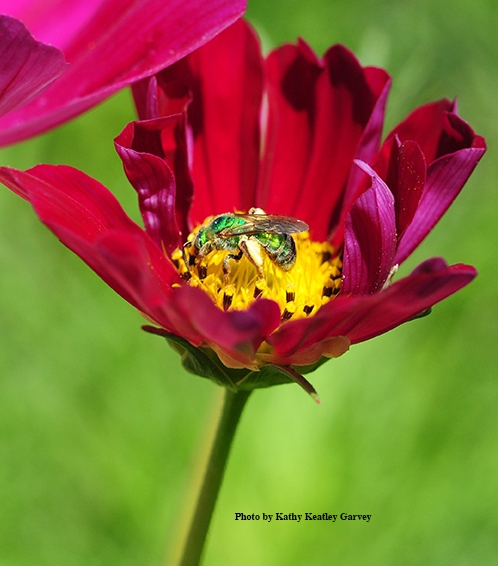
Feb. 19, 2008
Häagen-Dazs Donation to UC Davis
Dec. 8, 2008
Häagen-Dazs Launches Bee Garden Design Contest
Aug. 6, 2008
Insect Virus Researcher Michelle Flenniken Named Häagen-Dazs Postdoctoral Fellow at UC Davis
Feb. 26, 2009
Sausalito Team Wins Design Competition
Aug. 6, 2009
Haagen-Dazs Honey Bee Haven Site Preparation
Aug. 13, 2009
Bee Biology Website to Be Launched
Aug. 13, 2009
Thinking Outside the Box
Sept. 15, 2009
Campus Buzzway: Wildflowers
Dec. 15, 2009
Bee Biology Website Lauded
2010
June 6, 2010
Grand Opening Celebration of Honey Bee Garden
July 15, 2010
Art Is Where the Community Is; Blending Science with Art in the Häagen-Dazs Honey Bee Haven
July 30, 2010
More Than 50 Bee Species Found in Haven: Robbin Thorp (Now there's more than 80 and counting!)
Aug. 25, 2010
Donna Billick: Miss Bee Haven
Aug. 11, 2011
What the Signs Tell Us in the UC Davis Honey Bee Garden
Aug. 24, 2011
Royal Visit to Harry H. Laidlaw Jr. Honey Bee Research Facility
April 11, 2012
Brian Fishback: Spreading the Word about Honey Bees
Aug. 26, 2013
Eagle Scout Project: Fence Around the Bee Garden
Sept. 11 2012
A Fence to Behold
2013
April 25, 2013
UC Davis Bee Team Wins Major Award
Aug. 1, 2013
Häagen-Dazs Honey Bee Haven Place to Be
With photo of founding volunteers
Donors
List of Donors Who Helped Launch the Garden (2009 through July 2014)
Missy Borel, then manager of the California Center for Urban Horticulture (and now Missy Borel Gable, director of the California Master Gardener Program) served as the founding manager, a part-time position. Nineteen volunteers assisted her.
Today Extension apiculturist Elina Lastro Niño of the Department of Entomology and Nematology, serves as the faculty director of the bee garden. Christine Casey is the academic program manager.
For more information on the garden, access the Häagen-Dazs Honey Bee Haven website or contact beegarden@ucdavis.edu.
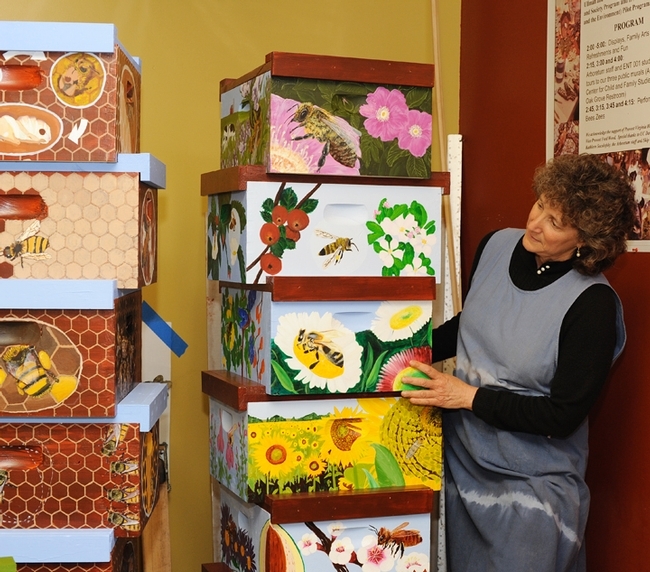
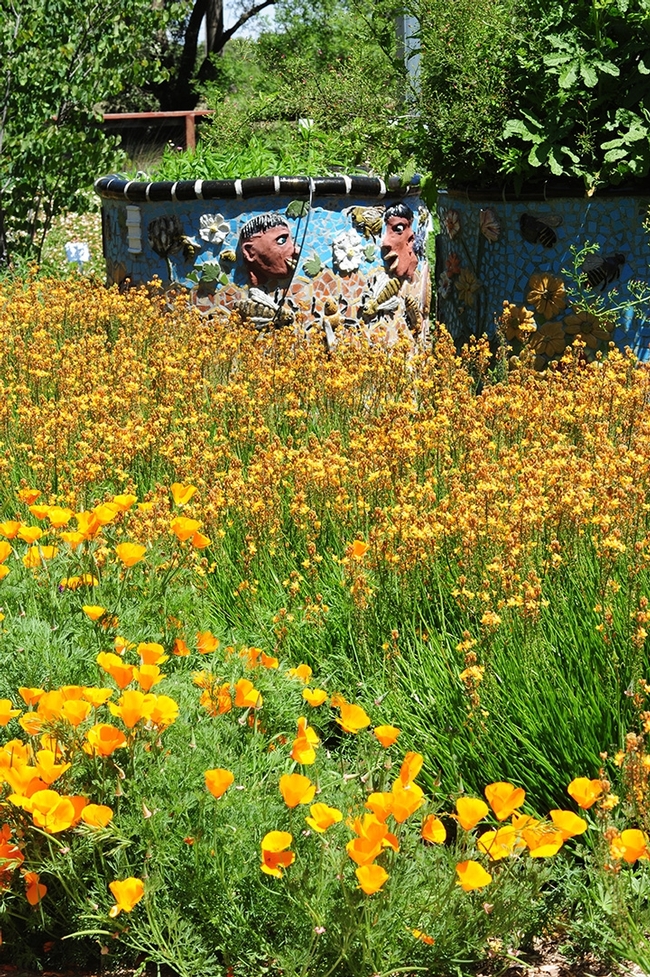
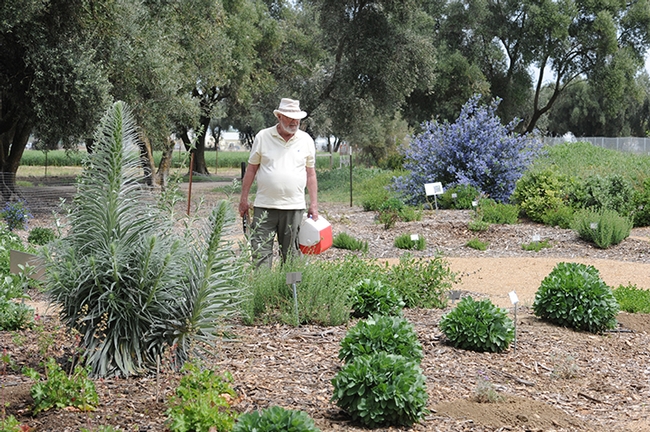
- Author: Kathy Keatley Garvey
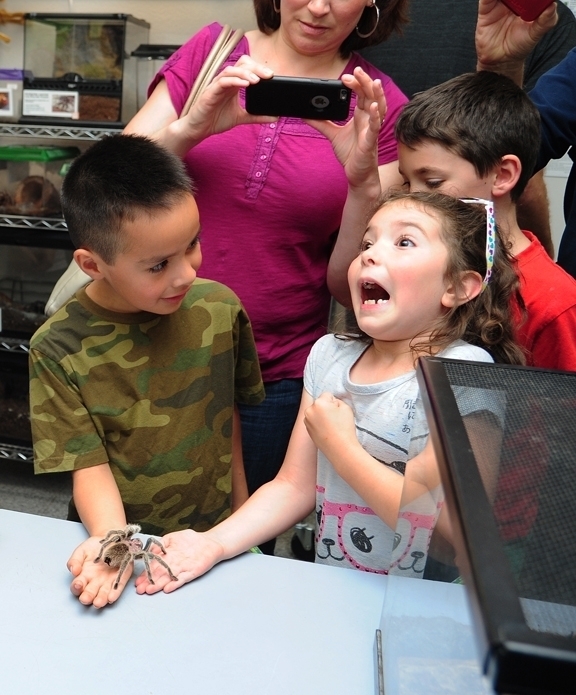
The annual event is a national celebration at which employers host their employees' children at their workplace.
The Bohart Museum, located in Room 1124 of the Academic Surge Building on Crocker Lane, will greet visitors from 1 to 5 p.m., while the bee haven, located on Bee Biology Road, west of the central campus, will be open from 11 a.m. to 1:30 p.m.
At the Bohart, TODS participants will explore the displays and hold live insects. The Bohart is the home of nearly 8 million insect specimens, plus a gift shop and a live "petting zoo" of Madagascar hissing cockroaches, stick insects (walking sticks) and tarantulas.
At the haven, a half-acre bee demonstration garden installed in the fall of 2009, docents will guide informal tours. TODS participants can engage in bee watching (bee observation hive), bee identification and a "catch-and-release" bee activity.
The UC Davis TODS program is designed for children ages 6-12. "TODS not only exposes girls and boys to what a parent or mentor does during their workday, but shows children the value of their education and provides an opportunity to share how they envision their future and begin steps toward their goals in a hands-on and interactive environment," according to the TODS website. "Kids will have the opportunity to see how our UC Davis community functions, instructs, learns and grows."
This event is for staff, faculty, students and their youth guests." More information on what will be open is available on the TODS website.
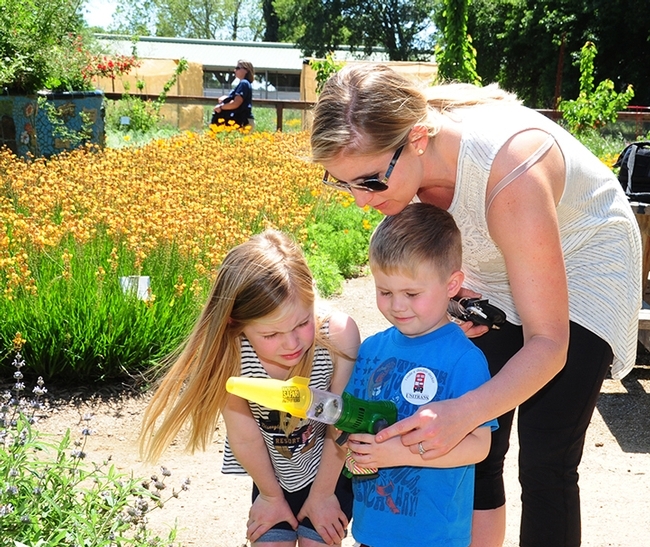
- Author: Kathy Keatley Garvey
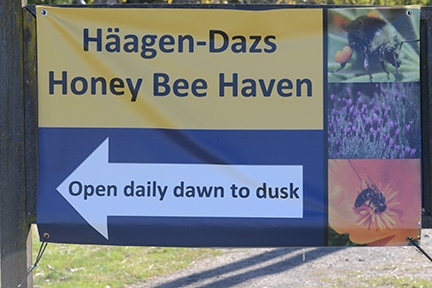
The garden, planted in the fall of 2009, is located on Bee Biology Road, next to the Harry H. Laidlaw Jr. Honey Bee Research Facility, west of the central campus. Director of the haven is Extension apiculturist Elina L. Niño.
"In addition to our popular catch-and-release bee activity, we'll be holding a plant and solitary bee house sale," said academic program manager Christine Casey. (See the plant list.)
"There will also be an exhibit of bee photographs by our volunteer photographer Allan Jones," Casey announced. Jones, a Davis resident, frequently photographs bees in the haven and in the UC Davis Arboretum.
Visitors can also see recommendations about what to plant for bees this fall, including information from the ongoing research trials.
The garden was founded and "came to life" during the term of interim department chair, Professor Lynn Kimsey, director of the Bohart Museum of Entomology, who coordinated the entire project. A Sausalito team--landscape architects Donald Sibbett and Ann F. Baker, interpretative planner Jessica Brainard and exhibit designer Chika Kurotaki--designed the garden as the winners of the international competition.
A six-foot long mosaic and ceramic sculpture of a worker bee, the work of self-described "rock artist" Donna Billick, anchors the garden. The UC Davis Art/Science Fusion Program, founded and directed by the duo of entomologist/artist Diane Ullman, professor and former chair of the UC Davis Department of Entomology, and Billick, coordinated the art in the garden through their classes.
The garden is open to the public--no admission--from dawn to dusk.
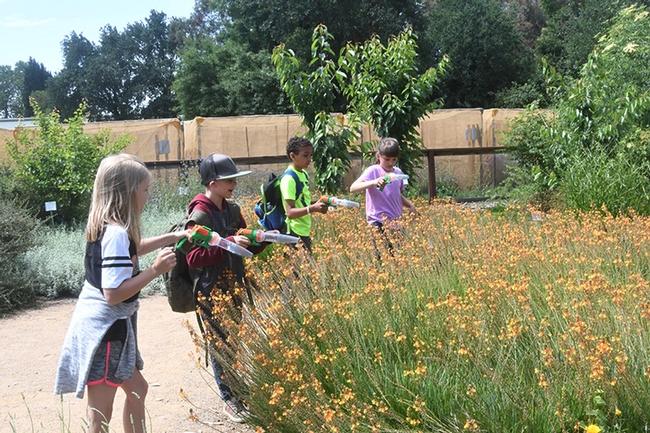
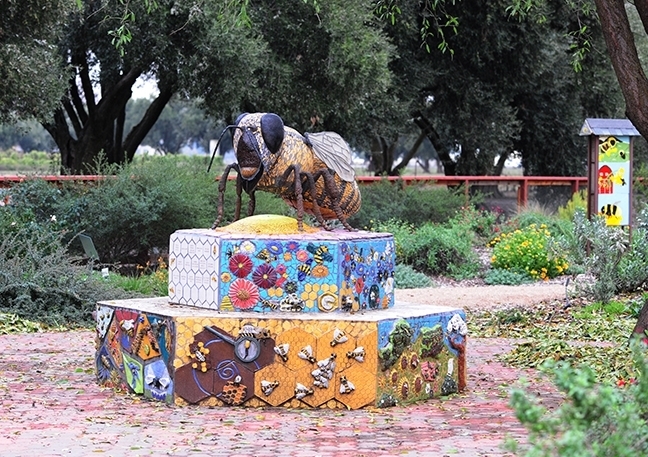
- Author: Kathy Keatley Garvey
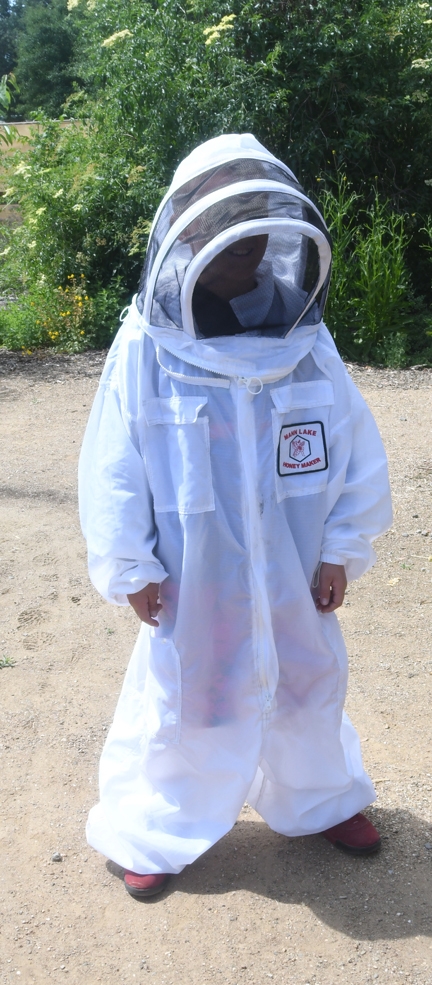
She is staffing one of five interactive learning stations assembled in the UC Davis Department of Entomology and Nematology's bee garden, the Häagen-Dazs Honey Bee Haven, to teach third-graders from Amador County the importance of bees and other pollinators.
Brutscher discusses the residents of the hive: the queen, worker bees (females) and drones (males). The third-graders, sitting, standing or kneeling in the garden, listen to her wide-eyed.
“Who knows what the job of a drone is?” Brutscher asks.
A hand shoots up. “The drones protect the queen!” a boy declares.
Not quite.
“The drone's only purpose is to mate with the queen,” Brutscher tells him. “The worker bees or females guard the hive.”
The students learn that the honey bee colony is a matriarchal society. The females do all the work, performing specific tasks with job titles such as nurse maids, nannies, royal attendants, builders, architects, foragers, dancers, honey tenders, pollen packers, propolis or "glue" specialists, air conditioning and heating technicians, guards, and undertakers. The queen can lay up to 2000 eggs a day during peak season.
The third graders then suit up, donning assorted beekeeper protective gear. They pose gleefully in oversized suits while adults on the tour--teachers, parents and mentors--photograph them.
Overall, it was a honey of a day at the haven, a half-acre public garden installed in 2009 on Bee Biology Road, west of the central campus. Divided into small groups, the students excitedly buzzed from one learning activity to another, not unlike bees buzzing from one flower to another.
Statewide Extension apiculturist Elina Lastro Niño of the UC Davis Department of Entomology and Nematology faculty and director of the California Master Beekeeper Program, explained pollination and how honey bees differ from such generalists as bumble bees and such specialists as squash bees. She invited the students to build their own bee, using pipe cleaners of various lengths to mimic how they are able to pollinate flowers. The youngsters also tasted apples, blueberries and almonds. Honey bees, she told them, pollinate one third of the food we eat.
Charley Nye, beekeeper and manager of the Harry H. Laidlaw Jr. Honey Bee Research Facility, zeroed in on the products of the hive. “When we see bees flying around, what are they doing there?” he asked.
“They're out gathering nectar and pollen,” responded one youngster.
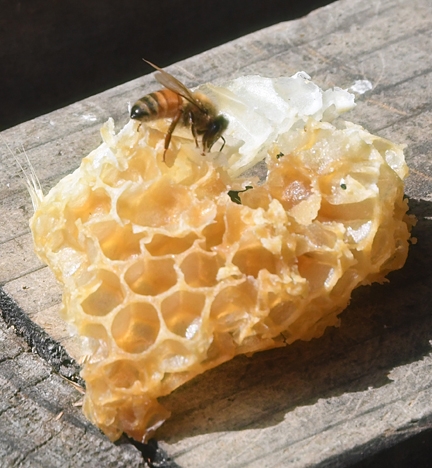
The students and adults liked the meadowfoam the best. “It tastes like cotton candy!” one girl said, slowly savoring the flavor she found reminiscent of a county fair. Most considered the almond honey "a little bitter and acidic," Nye said, but a few favored it because "it's not so sweet."
Wendy Mather, California Master Beekeeper Program manager, showed the youngsters a bee vacuum device and how to catch and release bees. “They gently collected, viewed and released the bee specimens,” Mather related. The other half of her group crafted seed cookies, decorated pots, and planted seeds for pollinators. They also viewed the bee and syrphid (hover) fly specimens loaned by pollination ecologist Neal Williams, UC Davis professor of entomology. The hover fly, sometimes called a flower fly, is a major pollinator.
Another station focused on solitary bees: leafcutter bees and blue orchard bees. The students painted nest boxes and learned how the native bees differ from honey bees. Honey bees are not natives of America; European colonists brought them to Jamestown, Virginia, in 1622. Honey bees did not arrive in California until 1853, the year a beekeeper installed colonies near San Jose.
Marcel Ramos, lab assistant in the Elina Niño lab, opened a hive inside a netted enclosure and showed the students the queen bee, workers and drones and pulled out frames of honey.
The event received financial support from the UC Davis College of Agricultural and Environmental Sciences Programmatic Initiative Grant, the Scott and Liberty Munson Family, and matching funds from Microsoft.
“This program was developed to ensure that our young scientists and future voters are aware of the importance of pollinators to our food production and ecosystems," Niño said. "We are also very excited to partner with programs across the university to recruit and support UC Davis students in becoming interns and mentors for the program. This program has already generated so much excitement with the kids and we want to provide this opportunity to as many schools as possible.”
Ron Antone, chair of the Farms of Amador and an Amador County Master Gardener, coordinated the Amador County visit, which drew third-graders from four schools: 67 from Plymouth and Sutter Creek elementary and "about the same number" from Pioneer and Pine Grove elementary. “The tour was coordinated and funded by Farms of Amador,” he said. “We are also associated with the Amador County Farmers Market Association."
“The program presented by Elina and the Häagen-Dazs Honey Bee Haven team was an incredible experience for all involved: students, parents, teachers and mentors from Farms of Amador and Amador County Master Gardeners," Antone said. “I could not have imagined a more successful trip."
Neither could the students. It was all that it was cracked up to "bee"--and much more.
Resources:
- Elina Lastro Niño website
- California Master Beekeeper Program
- E.L. Niño Bee Lab, Facebook
- Amador County Master Gardeners
- Farms of Amador
- Amador County Farmers Market Association
